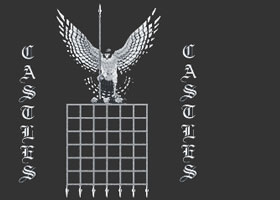Hever CastleHever Castle Timeline
Beheading of Anne Boleyn at the Tower of London Hever Castle - The History of Hever Castle
- Information & Facts about Hever Castle
- When was this Medieval Castle built?
- The Design, Layout and Architecture of Hever Castle
- Hever Castle and Queen Anne Boleyn
Interesting facts and Information about Hever Castle - The location of Hever Castle - Hever, Edenbridge, Kent in, England
- The courtyard is occupied by a range of early Tudor timber-framed buildings which were added by the Boleyn family
- Hever Castle has the most beautiful gardens in England
Description and History of Hever castle
Hever Castle is an example of the transition between the old fortress and the more comfortable mansion of a country squire or magnate. Times were less dangerous, the country more peaceful when Sir Geoffrey Boleyn transformed and rebuilt the castle built in the reign of Henry III by William de Hever, but the strong entrance-gate flanked by towers, embattled and machicolated, and defended by stout doors and three portcullises and the surrounding moat, shows that the need of defence had not quite passed away. The gates lead into a courtyard around which the hall, chapel, and domestic chambers are grouped. The long gallery Anne Boleyn so often traversed with impatience still seems to re-echo her steps, and her bedchamber, which used to contain some of the original furniture, has always a pathetic interest. The story of the courtship of Henry VIII with "the brown girl with a perthroat and an extra finger," as Margaret More, the daughter of Sir Thomas More, described her, is well known. The Purpose of the Hever Castle
The purpose of the Hever Castle were as follows: - A fortified Manor House by the Normans
- Strengthened into a fortified moated castle by the Plantagenets
- Subsequently used as a hunting lodge and a palatial residential home by the Tudors
The Main Events in the History of Hever Castle
The History of the site of Hever Castle dates back to the Normans. Famous historical figures and events feature in the history of Hever Castle the most being Queen Anne Boleyn, the wife of King Henry VIII. |

